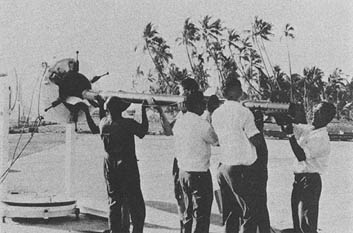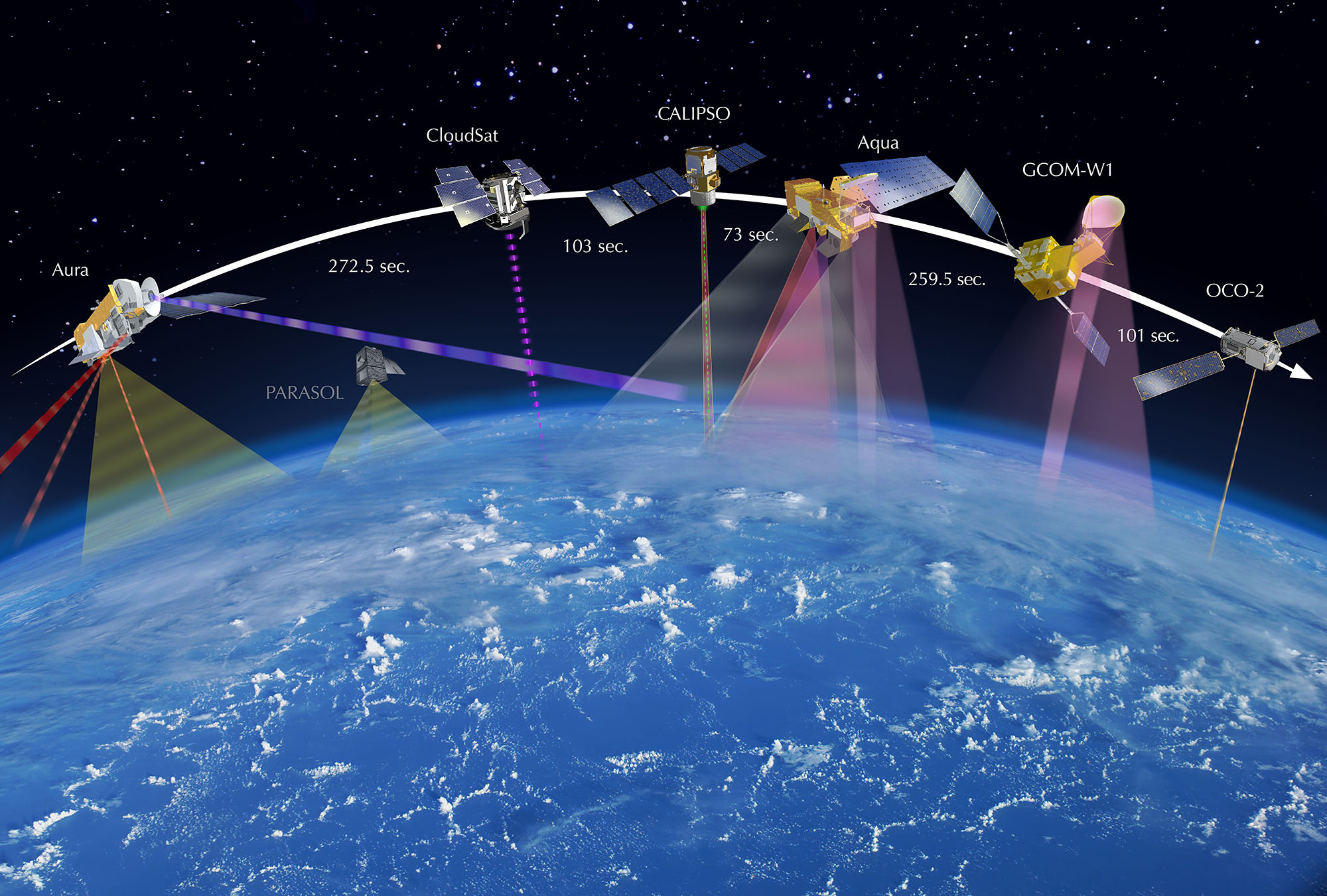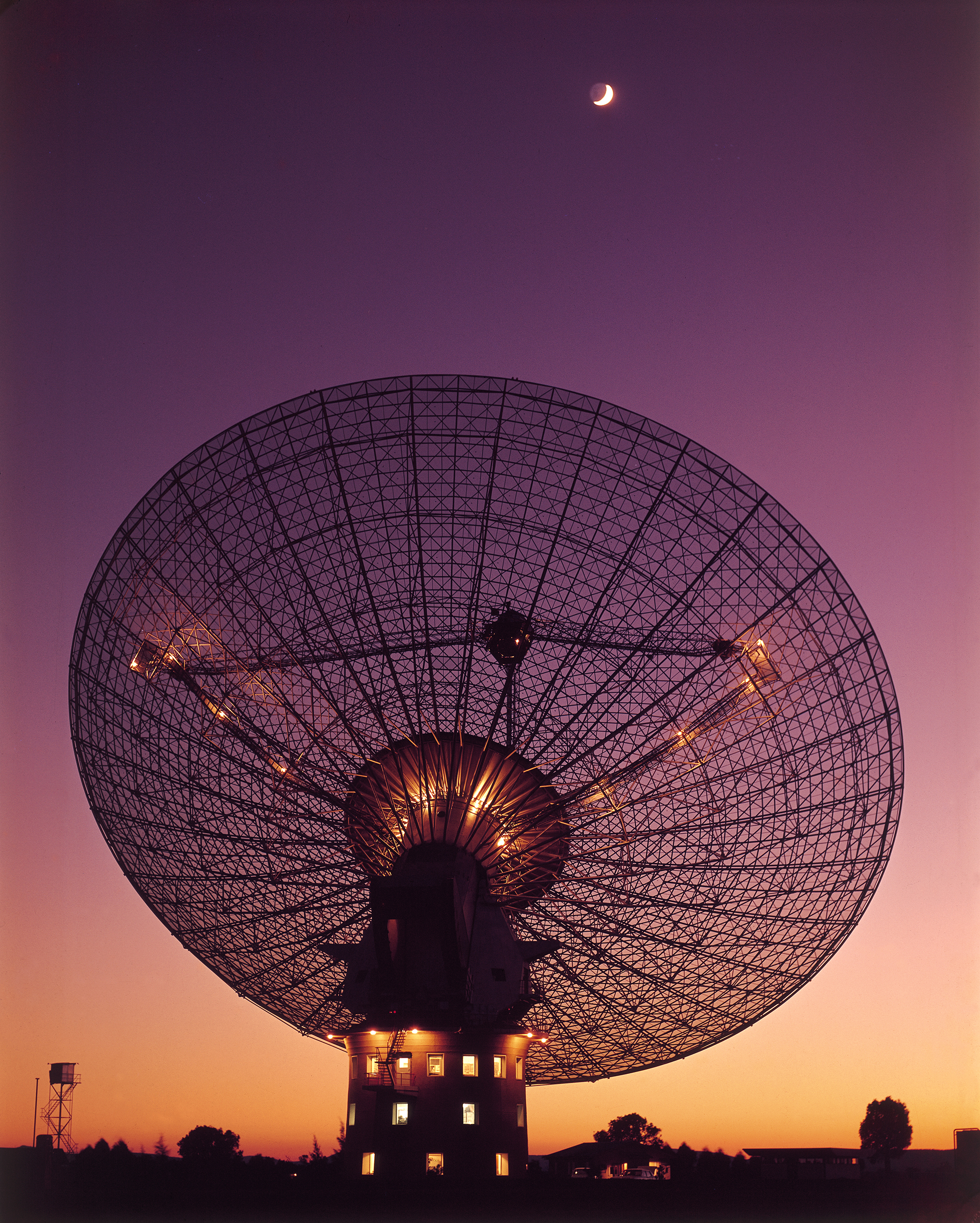|
IRS-1B
IRS-1B, Indian Remote Sensing satellite-1B, the second of the series of indigenous state-of-art remote sensing satellites, was successfully launched into a polar Sun-synchronous orbit on 29 August 1991 from the Soviet Cosmodrome at Baikonur. IRS-1B carries two sensors, LISS-1 and LISS-2, with resolutions of and respectively with a swath width of about during each pass over the country. It was a part-operational, part-experimental mission to develop Indian expertise in satellite imagery. It was a successor to the remote sensing mission IRS-1A, both undertaken by the Indian Space Research Organisation (ISRO). History IRS-1B was the second remote sensing mission to provide imagery for various land-based applications, such as agriculture, forestry, geology, and hydrology. Satellite description Improved features compared to its predecessor (IRS-1A): gyroscope referencing for better orientation sensing, time tagged commanding facility for more flexibility in camera operatio ... [...More Info...] [...Related Items...] OR: [Wikipedia] [Google] [Baidu] |
IRS-1A
IRS-1A, Indian Remote Sensing satellite-1A, the first of the series of indigenous state-of-art remote sensing satellites, was successfully launched into a polar Sun-synchronous orbit on 17 March 1988 from the Soviet Cosmodrome at Baikonur. IRS-1A carries two sensors, LISS-1 and LISS-2, with resolutions of and respectively with a swath width of about during each pass over the country. Undertaken by the Indian Space Research Organisation (ISRO). It was a part-operational, part-experimental mission to develop Indian expertise in satellite imagery. History The availability of Landsat imagery created a lot of interest in the science community. The Hyderabad ground station started receiving Landsat data on a regular basis in 1978. The Landsat program with its design and potentials was certainly a great model and yardstick for the IRS programme. IRS-1A was the first remote sensing mission to provide imagery for various land-based applications, such as agriculture, forestry, geolo ... [...More Info...] [...Related Items...] OR: [Wikipedia] [Google] [Baidu] |
Indian Space Research Organisation
The Indian Space Research Organisation (ISRO; ) is the national space agency of India, headquartered in Bengaluru. It operates under the Department of Space (DOS) which is directly overseen by the Prime Minister of India, while the Chairman of ISRO acts as the executive of DOS as well. ISRO is India's primary agency for performing tasks related to space-based applications, space exploration and the development of related technologies. It is one of six government space agencies in the world which possess full launch capabilities, deploy cryogenic engines, launch extraterrestrial missions and operate large fleets of artificial satellites. The Indian National Committee for Space Research (INCOSPAR) was established by Jawaharlal Nehru under the Department of Atomic Energy (DAE) in 1962, on the urging of scientist Vikram Sarabhai, recognising the need in space research. INCOSPAR grew and became ISRO in 1969, within DAE. In 1972, the government of India set up a Space Commission a ... [...More Info...] [...Related Items...] OR: [Wikipedia] [Google] [Baidu] |
Indian Remote Sensing
India's remote sensing program was developed with the idea of applying space technologies for the benefit of humankind and the development of the country. The program involved the development of three principal capabilities. The first was to design, build and launch satellites to a Sun-synchronous orbit. The second was to establish and operate ground stations for spacecraft control, data transfer along with data processing and archival. The third was to use the data obtained for various applications on the ground. India demonstrated the ability of remote sensing for societal application by detecting coconut root-wilt disease from a helicopter mounted multispectral camera in 1970. This was followed by flying two experimental satellites, Bhaskara-1 in 1979 and Bhaskara-2 in 1981. These satellites carried optical and microwave payloads. India's remote sensing programme under the Indian Space Research Organization (ISRO) started off in 1988 with the IRS-1A, the first of the series ... [...More Info...] [...Related Items...] OR: [Wikipedia] [Google] [Baidu] |
Vostok-2M
The Vostok-2M (russian: Восток meaning ''"East"''), GRAU index 8A92M was an expendable carrier rocket used by the Soviet Union between 1964 and 1991. Ninety-three were launched, of which one failed. Another was destroyed before launch. It was originally built as a specialised version of the earlier Vostok-2, for injecting lighter payloads into higher sun-synchronous orbits. It was a member of the R-7 family of rockets, and the last Vostok. The Vostok-2M made its maiden flight on 28 August 1964, from Site 31/6 at the Baikonur Cosmodrome, successfully placing Kosmos 44, a Meteor weather satellite into orbit. Its only launch failure occurred on 1 February 1969, when the launch of a Meteor failed due to an upper stage problem. At 16:01 GMT on 18 March 1980, a Vostok-2M exploded during fueling at Plesetsk Site 43/4, ahead of the launch of a Tselina-D satellite, killing 48 people who were working on the rocket at the time. A filter in a hydrogen peroxide tank of the third s ... [...More Info...] [...Related Items...] OR: [Wikipedia] [Google] [Baidu] |
Indian Remote Sensing Programme
India's remote sensing program was developed with the idea of applying space technologies for the benefit of humankind and the development of the country. The program involved the development of three principal capabilities. The first was to design, build and launch satellites to a Sun-synchronous orbit. The second was to establish and operate ground stations for spacecraft control, data transfer along with data processing and archival. The third was to use the data obtained for various applications on the ground. India demonstrated the ability of remote sensing for societal application by detecting coconut root-wilt disease from a helicopter mounted multispectral camera in 1970. This was followed by flying two experimental satellites, Bhaskara-1 in 1979 and Bhaskara-2 in 1981. These satellites carried optical and microwave payloads. India's remote sensing programme under the Indian Space Research Organization (ISRO) started off in 1988 with the IRS-1A, the first of the series ... [...More Info...] [...Related Items...] OR: [Wikipedia] [Google] [Baidu] |
IRS-1E
IRS-1E was an Earth observation mission launched under the National Natural Resources Management System (NNRMS) programme by Indian Space Research Organisation (ISRO). Sometimes written IRS-P1. The objective of the mission was to develop Earth imagery using instruments carried on board. Due to a malfunction of the launch vehicle, the satellite deviated from its path and plunged into the Indian Ocean. History IRS-1E was a follow-up mission to the satellite IRS-1A, to develop India's capability in the field of remote sensing. The satellite was to take up missions in the area of ground-water exploration, land use, forest and flood mapping. The letter "E" indicates that the satellite was an engineering model. The letter "P" (IRS-P1) in the Indian Remote Sensing Programme of Earth observation satellite indicates that the satellite was to be launched aboard a Polar Satellite Launch Vehicle (PSLV). It was launched on 20 September 1993. Instruments IRS-1E carried two instruments: * ... [...More Info...] [...Related Items...] OR: [Wikipedia] [Google] [Baidu] |
Earth Observation Satellite
An Earth observation satellite or Earth remote sensing satellite is a satellite used or designed for Earth observation (EO) from orbit, including spy satellites and similar ones intended for non-military uses such as environmental monitoring, meteorology, cartography and others. The most common type are Earth imaging satellites, that take satellite images, analogous to aerial photographs; some EO satellites may perform remote sensing without forming pictures, such as in GNSS radio occultation. The first occurrence of satellite remote sensing can be dated to the launch of the first artificial satellite, Sputnik 1, by the Soviet Union on October 4, 1957. Sputnik 1 sent back radio signals, which scientists used to study the ionosphere. The United States Army Ballistic Missile Agency launched the first American satellite, Explorer 1, for NASA’s Jet Propulsion Laboratory on January 31, 1958. The information sent back from its radiation detector led to the discovery of the ... [...More Info...] [...Related Items...] OR: [Wikipedia] [Google] [Baidu] |
Mbps
In telecommunications, data-transfer rate is the average number of bits ( bitrate), characters or symbols ( baudrate), or data blocks per unit time passing through a communication link in a data-transmission system. Common data rate units are multiples of bits per second (bit/s) and bytes per second (B/s). For example, the data rates of modern residential high-speed Internet connections are commonly expressed in megabits per second (Mbit/s). Standards for unit symbols and prefixes Unit symbol The ISQ symbols for the bit and byte are ''bit'' and ''B'', respectively. In the context of data-rate units, one byte consists of 8 bits, and is synonymous with the unit octet. The abbreviation bps is often used to mean bit/s, so that when a ''1 Mbps'' connection is advertised, it usually means that the maximum achievable bandwidth is 1 Mbit/s (one million bits per second), which is 0.125 MB/s ( megabyte per second), or about 0.1192 MiB/s ( mebibyte per second). The Ins ... [...More Info...] [...Related Items...] OR: [Wikipedia] [Google] [Baidu] |
Ground Station
A ground station, Earth station, or Earth terminal is a terrestrial radio station designed for extraplanetary telecommunication with spacecraft (constituting part of the ground segment of the spacecraft system), or reception of radio waves from astronomical radio sources. Ground stations may be located either on the surface of the Earth, or in its atmosphere. Earth stations communicate with spacecraft by transmitting and receiving radio waves in the super high frequency (SHF) or extremely high frequency (EHF) bands (e.g. microwaves). When a ground station successfully transmits radio waves to a spacecraft (or vice versa), it establishes a telecommunications link. A principal telecommunications device of the ground station is the parabolic antenna. Ground stations may have either a fixed or itinerant position. Article 1 § III of the International Telecommunication Union (ITU) Radio Regulations describes various types of stationary and mobile ground stations, and their i ... [...More Info...] [...Related Items...] OR: [Wikipedia] [Google] [Baidu] |
Shadnagar
Shadnagar is a Town and assembly constituency in the Ranga Reddy district in Hyderabad, Telangana, India. As part of the reorganisation of districts in Telangana, Shadnagar separated from Mahabubnagar district and merged into Ranga Reddy district Headquarters. Shadnagar is the site of the Indian Space Research Organisation National Remote Sensing Centre. Bill Gates visited the community hospital for an immunization session and administered the polio vaccine to residents in 2002. History Shadnagar was founded between 1869 and 1911 under the sixth Nizam - ''Mir Mahboob Ali Khan Asaf Jah VI, also known as, Sir Mir Mahboob Ali Khan Siddiqi Bayafandi (17 August 1866 – 29 August 1911) was the 6th Nizam of Hyderabad. He ruled Hyderabad state, one of the Princely states in India between 1869 and 1911. Early life Mahb ...''. References {{Authority control Cities and towns in Ranga Reddy district ... [...More Info...] [...Related Items...] OR: [Wikipedia] [Google] [Baidu] |
India
India, officially the Republic of India ( Hindi: ), is a country in South Asia. It is the seventh-largest country by area, the second-most populous country, and the most populous democracy in the world. Bounded by the Indian Ocean on the south, the Arabian Sea on the southwest, and the Bay of Bengal on the southeast, it shares land borders with Pakistan to the west; China, Nepal, and Bhutan to the north; and Bangladesh and Myanmar to the east. In the Indian Ocean, India is in the vicinity of Sri Lanka and the Maldives; its Andaman and Nicobar Islands share a maritime border with Thailand, Myanmar, and Indonesia. Modern humans arrived on the Indian subcontinent from Africa no later than 55,000 years ago., "Y-Chromosome and Mt-DNA data support the colonization of South Asia by modern humans originating in Africa. ... Coalescence dates for most non-European populations average to between 73–55 ka.", "Modern human beings—''Homo sapiens''—originated in Africa. Th ... [...More Info...] [...Related Items...] OR: [Wikipedia] [Google] [Baidu] |
Push Broom Scanner
A push broom scanner, also known as an along-track scanner, is a device for obtaining images with spectroscopic sensors. The scanners are regularly used for passive remote sensing from space, and in spectral analysis on production lines, for example with near-infrared spectroscopy used to identify contaminated food and feed. The moving scanner line in a traditional photocopier (or a scanner or facsimile machine) is also a familiar, everyday example of a push broom scanner. Push broom scanners and the whisk broom scanners variant (also known as across-track scanners) are often contrasted with staring arrays (such as in a digital camera), which image objects without scanning, and are more familiar to most people. In orbital push broom sensors, a line of sensors arranged perpendicular to the flight direction of the spacecraft is used. Different areas of the surface are imaged as the spacecraft flies forward. A push broom scanner can gather more light than a whisk broom scanner beca ... [...More Info...] [...Related Items...] OR: [Wikipedia] [Google] [Baidu] |




